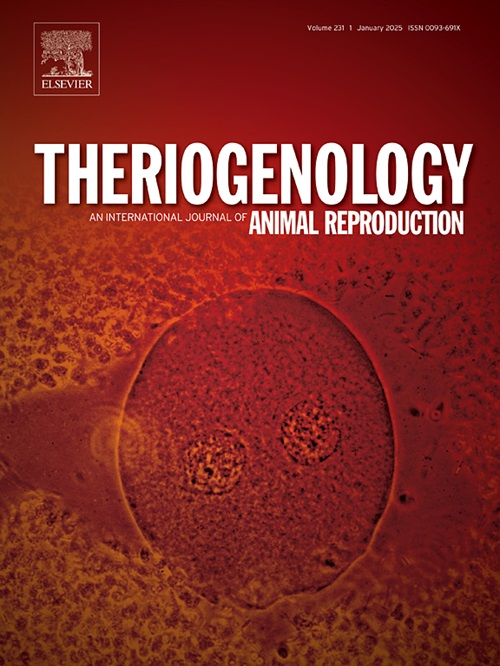L-epicatechin partially alleviates Ochratoxin A–induced oxidative and endoplasmic reticulum stress and improves developmental competence of porcine embryos during in vitro culture
IF 2.5
2区 农林科学
Q3 REPRODUCTIVE BIOLOGY
引用次数: 0
Abstract
Ochratoxin A (OTA), a mycotoxin produced by Aspergillus and Penicillium species, is commonly found in various food products and is known to cause oxidative stress. It also exhibits embryotoxic effects in several animals, including pigs. In porcine in vitro embryo production (IVP), Oxidative stress and endoplasmic reticulum (ER) stress are key factors that impair embryo development and quality. This study evaluated the effects of L-epicatechin (L-E), a natural polyphenol, on embryonic development under OTA-induced stress in a porcine model. Supplementation with L-E significantly improved cleavage and blastocyst formation rates, reduced intracellular reactive oxygen species (ROS) and malondialdehyde (MDA) levels, and increased glutathione (GSH) levels as well as the activities of superoxide dismutase (SOD) and catalase (CAT). In addition, L-E maintained mitochondrial membrane potential, enhanced mitochondrial activity, and partially restored ATP production. ER stress-related markers, including sXBP1, GRP78, and CHOP, were downregulated in embryos treated with L-E. These results suggest that 1 mg/L of L-E partially mitigates OTA-induced cellular stress and promotes embryo viability by regulating oxidative balance, organelle function, and apoptosis. L-E may serve as a beneficial additive to improve culture conditions and developmental outcomes in porcine IVP systems.
l -表儿茶素可部分缓解赭曲霉毒素a诱导的氧化应激和内质网应激,提高体外培养猪胚胎的发育能力
赭曲霉毒素A (OTA)是一种由曲霉和青霉菌产生的霉菌毒素,通常存在于各种食品中,已知会引起氧化应激。它在包括猪在内的几种动物身上也表现出胚胎毒性作用。在猪体外胚胎生产(IVP)中,氧化应激和内质网应激是影响胚胎发育和质量的关键因素。本研究评价了天然多酚l -表儿茶素(L-E)对乙酸诱导的猪胚胎发育的影响。添加L-E可显著提高卵裂率和囊胚形成率,降低细胞内活性氧(ROS)和丙二醛(MDA)水平,提高谷胱甘肽(GSH)水平以及超氧化物歧化酶(SOD)和过氧化氢酶(CAT)活性。此外,L-E维持线粒体膜电位,增强线粒体活性,部分恢复ATP的产生。内质网应激相关标记,包括sXBP1、GRP78和CHOP,在L-E处理的胚胎中下调。上述结果提示,1 mg/L L- e可通过调节氧化平衡、细胞器功能和细胞凋亡,部分缓解ota诱导的细胞应激,促进胚胎存活。L-E可以作为一种有益的添加剂,改善猪IVP系统的培养条件和发育结果。
本文章由计算机程序翻译,如有差异,请以英文原文为准。
求助全文
约1分钟内获得全文
求助全文
来源期刊

Theriogenology
农林科学-生殖生物学
CiteScore
5.50
自引率
14.30%
发文量
387
审稿时长
72 days
期刊介绍:
Theriogenology provides an international forum for researchers, clinicians, and industry professionals in animal reproductive biology. This acclaimed journal publishes articles on a wide range of topics in reproductive and developmental biology, of domestic mammal, avian, and aquatic species as well as wild species which are the object of veterinary care in research or conservation programs.
 求助内容:
求助内容: 应助结果提醒方式:
应助结果提醒方式:


